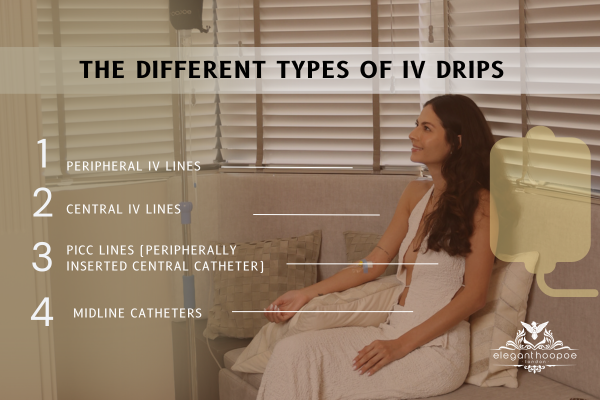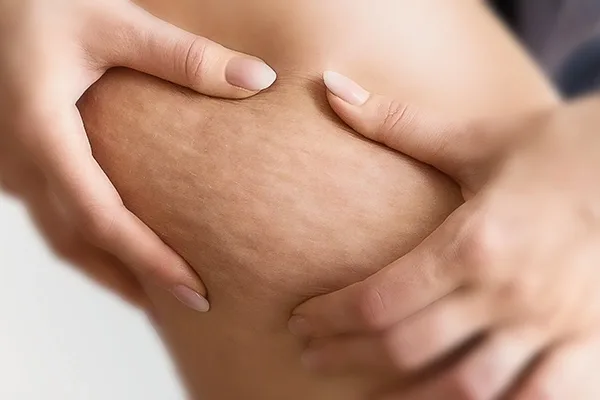What Is an IV Infusion Drip & How Does It Benefit Your Health?
An IV infusion drip delivers fluids, medications, and nutrients directly into the bloodstream, making it essential in hospitals and wellness treatments. It is commonly used for:
Rehydration – Restores fluids and electrolytes lost due to dehydration.
Medication delivery – Ensures fast, controlled dosing of antibiotics, pain relievers, and chemotherapy drugs.
Nutrient therapy – Provides vitamins and minerals for those unable to absorb nutrients orally.
Emergency care – Quickly administers life-saving treatments for critical conditions.
IV drip therapy offers fast absorption, precise dosing, and versatility, though potential risks like infection or vein irritation require proper medical oversight.
Intravenous (IV) drip therapy is a critical medical procedure that facilitates the direct delivery of fluids, medications, and nutrients into the bloodstream. This therapy plays a vital role in various healthcare settings, especially in emergencies, surgeries, and critical care, where quick and accurate treatment is essential.
The process involves using IV bags, tubing, and catheters to ensure the controlled infusion of solutions, which can include rehydration fluids, antibiotics, and parenteral nutrition. While IV therapy offers numerous benefits, such as fast delivery and precise dosage control, it also comes with potential risks that healthcare professionals must manage. Understanding the mechanisms, uses, and advantages of IV drip therapy highlights its significance in modern medicine.
IV Drip Therapy Explained: How It Works and Its Medical Uses

Intravenous drip therapy has evolved to become a vital part of modern health care; it is considered a flexible method of administering important fluids, drugs, and nutrients directly into the blood. IV therapy ranges from emergency interventions to routine hospital treatments and applies to the maintenance of health in patients and the treatment of a wide range of diseases.
It becomes indispensable in areas where acute actions are important, such as in surgeries, emergency rooms, and intensive care units, because of its immediacy and control in the delivery of therapeutic agents. This in-depth discussion covers the mechanics, applications, and advantages of IV drip therapy, thus enabling you to understand its key position in health care.
What Is an IV Drip?
An IV drip is a procedure where some kind of liquid or medicine is introduced into the body through a vein. “IV” simply means “intravenous,” meaning “within a vein.” A certain line of treatment generally consists of placing a catheter into one of the veins, most often found in the arm or hand, and then attaching it to a bag of fluid via a tube that enables controlled fluid infusion.
The fluid within the IV bag can contain different solutions, including:
- Saline (saltwater) to rehydrate
- Electrolytes for restoring balance
- Medications like antibiotics, pain relievers, or chemotherapy drugs
- Nutrients such as vitamins or glucose
The controlled flow can allow the continuous administration of these substances, thus making sure that the right dosages are administered to the patient within a fixed period. This route circumvents the digestive system completely; hence, the effects are immediate. In many medical situations, this might be critical.
Related article: Vitamin infusion therapy
The Meaning of Drip in Hospitals

In a hospital setting, the term “drip” generally refers to the method of delivering a continuous flow of intravenous fluids or medications. The “drip” mechanism comes from the fact that fluids are released in a steady stream or drop-by-drop from the IV bag into the patient’s bloodstream. This delivery method is beneficial when:
- A continuous supply of medication is needed (e.g., during surgery or for chronic pain management)
- A patient requires gradual fluid replacement due to dehydration or blood loss
- Rapid administration of drugs is necessary in emergency situations, such as heart attacks or sepsis
IV drip therapy can be used in almost every department within a hospital, from the emergency room and intensive care unit to regular inpatient wards.
What is the process behind how an IV drip functions?
The process of setting up an IV drip involves several components:
- IV Bag: The solution to be administered is kept in a sterile bag, usually suspended above the patient to facilitate flow through gravity.
- IV Tubing: This tubing connects the IV bag to a small catheter that is inserted into the patient’s vein. The tubing contains a roller clamp that enables the healthcare provider to adjust the flow rate.
- Catheter: A narrow, flexible tube inserted in a vein in most cases in the forearm or hand. At times, a central line is employed, which involves a larger catheter placed in a major vein near the heart.
- Drip Chamber: Below the IV bag, this chamber functions to regulate the flow of fluid and prevents any air from entering the blood.

IV Drip in Hospital Settings: Common Uses
In hospitals, IV drip therapy serves numerous purposes and is tailored to meet specific medical needs. Here are some of the most common applications:
- Rehydration Therapy: IV fluids are used to treat patients with dehydration due to illnesses such as gastroenteritis, severe fever, or prolonged vomiting and diarrhea. Rehydration is critical for restoring fluid balance, electrolyte levels, and kidney function.
- Medication Delivery: Many drugs, including antibiotics, antifungals, antivirals, chemotherapy agents, and pain management medications, can be administered through an IV. This method ensures that the medication reaches the bloodstream quickly for fast and effective treatment.
- Parenteral Nutrition: For patients who cannot eat or absorb nutrients through the digestive tract (e.g., those with severe gastrointestinal conditions or post-surgery), IV drips can provide essential nutrients directly into the bloodstream.
- Electrolyte Imbalance Correction: IV therapy can rapidly replenish vital electrolytes such as sodium, potassium, calcium, and magnesium, which may be dangerously low due to conditions like kidney disease or severe trauma.
- Blood Transfusions: In cases of significant blood loss or severe anemia, an IV line is used to administer blood products directly to the patient.
- Surgery and Post-Operative Care: Patients undergoing surgery often receive IV fluids to maintain hydration and administer anesthetics, pain relief, and other medications during and after the procedure.
Medical Benefits and Advantages of IV Drip Therapy

- Fast Delivery: Since this is a direct infusion into the blood, the action also becomes rapid, making it ideal in emergencies.
- Accurate Dosage Control: Because of the regulated flow, it allows the patient to receive correct dosages over a fixed period, minimizing risks that could be involved with overdosing or under-dosing.
- Bypasses the Digestive System: This can be quite useful in patients who cannot take medications by mouth due to nausea, vomiting, or gastrointestinal issues.
- Versatility: It will have the ability to infuse different kinds of fluids, medications, or nutrients, depending on what condition the patient has.
Related article: Infusion therapy
The Different Types of IV Drips

- Peripheral IV Lines: The most common type used for short-term therapies. These are typically inserted in smaller veins, such as those in the forearm or hand.
- Central IV Lines: Used for long-term treatment or when stronger medications are needed. A central line is inserted into a larger vein near the heart.
- PICC Lines (Peripherally Inserted Central Catheter): A type of central line placed in a vein in the arm and threaded near the heart. These are often used for chemotherapy or prolonged antibiotic therapy.
- Midline Catheters: Similar to peripheral lines but extend deeper into the veins, providing an option for intermediate-duration treatments.
Potential Complications and Risks of IV Drip Therapy

Generally, IV therapy is safe, though there are several possible risks and complications with the use of this modality, including the following:
- Infection: This may occur at the site where the IV has been inserted, provided sterile techniques have not been employed.
- Phlebitis: This is the inflammation of the vein and may result from the action of irritation caused by the catheter or fluids.
- Air Embolism: This is an uncommon but serious complication where air gains entry into the venous circulation through the IV.
- Infiltration: This can be said to take place when the leakage of the fluid occurs into the tissues surrounding the vein rather than its delivery to the vein itself.
If you are looking for an IV therapy clininc in Dubai, Elegant Hoopoe is the best choice.
A Final Word: The Ever-growing Role of IV Drip Therapy in Healthcare
As discussed earlier, IV drip therapy is one of the cornerstones of contemporary medicine because it can be tailored to suit treatment needs for virtually anything. The speed, precision, and specificity that undergird its effectiveness have established IV drip therapy as one of the highly valued ways of intervention across most settings, ranging from hospitals and clinics to outpatient and home care services.
There are possible risks of infection or irritation of the vein, but continuous development of medical technologies and protocols furthers safety and effectiveness in IV therapies. As the field continues to progress, the range of applications for IV drip will continue to expand its grasp in being an essential tool in providing better outcomes for patients, furthering medical practices. Understanding its benefits and limitations allows the professional healthcare worker and the patient to be informed in their decision-making processes, thus making IV therapy a keystone in the delivery of quality care.
For people interested in experiencing the benefits of IV drip therapy firsthand, consider visiting Elegant Hoopoe, where you can rejuvenate, refuel, and revitalize with various specialized IV treatments in Dubai. Whether you’re looking to enhance your energy levels, strengthen your immune system, or achieve radiant, youthful skin, Elegant Hoopoe offers customized solutions tailored to your wellness needs. Their selection includes beauty drips for glowing skin, detoxification infusions to cleanse your system, and energy cocktails designed to combat fatigue and boost vitality.
Elegant Hoopoe’s premium services also extend to supporting recovery, with options like workout recovery drips to ease muscle soreness or illness recovery infusions that aid in faster recuperation. Experience the next level of personalized health and wellness by exploring their range of IV therapies that cater to different lifestyle goals, from enhancing athletic performance to supporting weight loss efforts.






